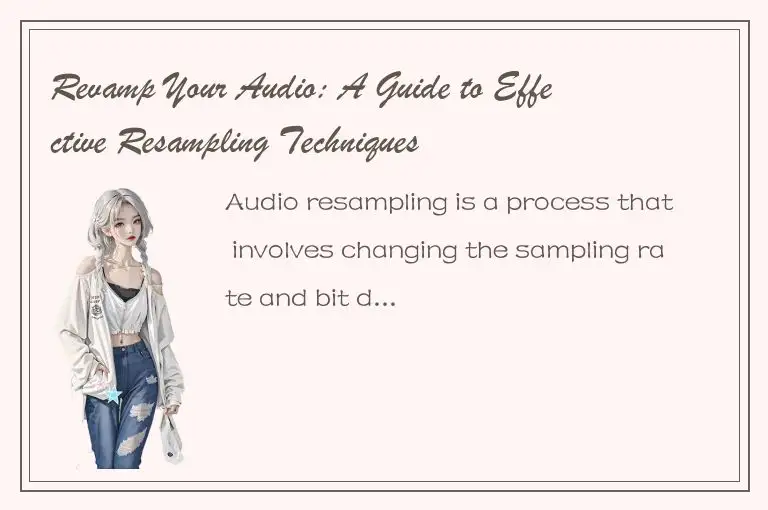Audio resampling is a process that involves changing the sampling rate and bit depth of a digital audio signal. This process has become an essential part of modern music production and post-production workflows, allowing sound designers to manipulate and modify their sound in unique ways. Whether you are creating an original track, editing a podcast, or working on a film project, resampling can help you achieve the desired results.

In this article, we will discuss the process of resampling in detail and provide you with tips and techniques to improve your audio production skills.
Why Resampling is Important?
When you record an audio signal, it is digitized and stored as a series of samples. A sample is a measurement of the amplitude of the signal at a particular point in time. The sampling rate determines how often these measurements are taken. The higher the sampling rate, the more detailed and accurate the representation of the original signal will be.
Resampling is important because it allows you to change the sampling rate of an audio signal. This technique is often used to convert audio between different formats, such as increasing the sampling rate of a low-quality sample or decreasing the sampling rate of a high-quality sample. Additionally, resampling can be used to manipulate the pitch, tempo, and duration of an audio signal.
How to Resample?
To resample an audio signal, you will need to use a digital audio workstation (DAW) or a specialized resampling tool. Most DAWs have built-in resampling capabilities, making it easy to change sampling rates within a project.
The first step in resampling is to select the audio that you want to modify. This can be a single track or a group of tracks within a project. Once you have selected the audio, you will need to open the resampling tool within your DAW.
Next, you will need to select the target sampling rate and bit depth for your audio. This will depend on the desired output format and the capabilities of your equipment. In general, higher sampling rates and bit depths result in higher-quality audio but require more processing power and storage space.
Once you have selected the target sampling rate and bit depth, you can preview the resampled audio to ensure that it meets your needs. You may need to make adjustments to the resampling settings to achieve the desired sound.
Tips for Effective Resampling
Resampling can be a powerful tool for creating unique and interesting sounds. However, it can also introduce unwanted artifacts and distortions into your audio. Here are some tips to help you make the most of resampling:
1. Use High-Quality Source Audio
Resampling can only improve the quality of your audio up to a certain point. If you start with low-quality source material, the resampled audio will also be low in quality. Always use high-quality source material to ensure the best possible results.
2. Experiment with Different Sampling Rates and Bit Depths
Different sampling rates and bit depths will affect the sound of your resampled audio. Experiment with different settings to find the sweet spot for your project.
3. Be Mindful of Aliasing
Aliasing is a type of distortion that occurs when high-frequency signals are sampled at too low a rate. Be mindful of this when resampling, and use anti-aliasing filters if necessary.
4. Pay Attention to Pitch and Tempo
Resampling can affect the pitch and tempo of your audio. This can be a useful tool for creating unique sounds, but it can also create unwanted effects. Always listen to the resampled audio carefully to ensure that it sounds the way you intended.
Conclusion
Resampling is a powerful tool for manipulating and modifying digital audio signals. It allows you to change the sampling rate and bit depth of an audio track, which can result in unique and interesting sounds. By following these tips and techniques, you can make the most of resampling and take your audio production skills to the next level.




 QQ客服专员
QQ客服专员 电话客服专员
电话客服专员